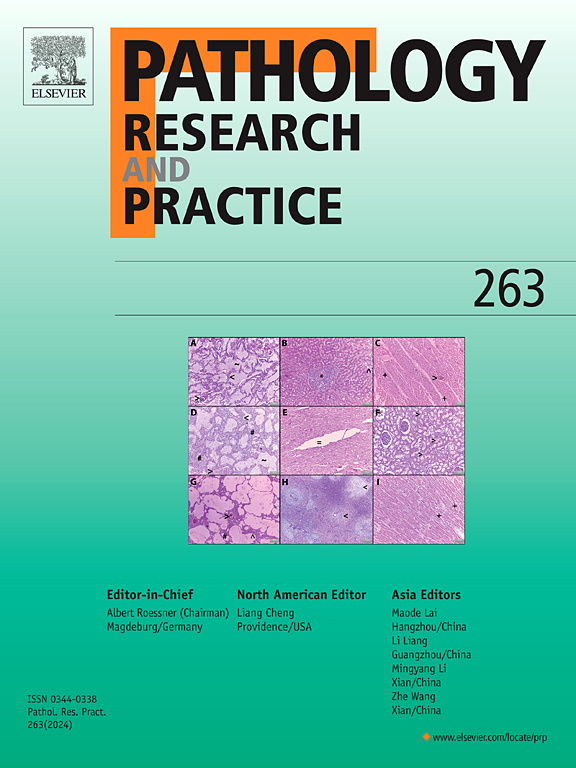From inflammation to carcinogenesis: Distinct pathways and clinical implications of IBD-associated colorectal cancer compared with sporadic CRC
IF 3.2
4区 医学
Q2 PATHOLOGY
引用次数: 0
Abstract
Inflammatory bowel disease-associated colorectal cancer (IBD-CRC) represents a distinct clinical and molecular entity compared with sporadic colorectal cancer (CRC). While sporadic CRC arises through the adenoma–carcinoma sequence, IBD-CRC follows an inflammation–dysplasia–carcinoma pathway, characterized by early TP53 alterations, multifocality, and flat lesions that challenge detection. Contemporary epidemiology indicates declining IBD-CRC incidence in high-income regions due to improved surveillance, though risk remains elevated in subgroups with long-standing colitis, primary sclerosing cholangitis (PSC), or persistent inflammation. In contrast, underreporting in low- and middle-income countries obscures the true global burden. Advances in high-definition colonoscopy and chromoendoscopy have improved detection, yet optimal risk-adapted surveillance strategies remain underutilized. Molecular insights highlight differences in genetic alterations, immune evasion, and microbial drivers between IBD-CRC and sporadic CRC. This review synthesizes epidemiologic, pathogenetic, and clinical distinctions, underscores challenges in surveillance and reporting, and discusses emerging technologies—including liquid biopsy, artificial intelligence, and multi-omics—that may refine prevention and early detection. Recognition of IBD-CRC as a separate disease process is essential to optimize individualized risk stratification, surveillance algorithms, and therapeutic strategies.
从炎症到癌变:ibd相关结直肠癌与散发性结直肠癌的不同途径和临床意义
与散发性结直肠癌(CRC)相比,炎症性肠病相关结直肠癌(IBD-CRC)代表了一种独特的临床和分子实体。散发性结直肠癌是通过腺瘤-癌序列发生的,而IBD-CRC则遵循炎症-发育不良-癌途径,其特征是早期TP53改变、多灶性和难以检测的扁平病变。当代流行病学表明,由于监测改善,高收入地区IBD-CRC发病率下降,但长期结肠炎、原发性硬化性胆管炎(PSC)或持续性炎症亚组的风险仍然升高。相比之下,低收入和中等收入国家的低报掩盖了真正的全球负担。高清晰度结肠镜检查和色素内窥镜检查的进步改善了检测,但最佳的风险适应监测策略仍未得到充分利用。分子研究强调了IBD-CRC和散发性CRC在遗传改变、免疫逃避和微生物驱动方面的差异。本综述综合了流行病学、病理学和临床特征,强调了监测和报告方面的挑战,并讨论了可能改进预防和早期检测的新兴技术,包括液体活检、人工智能和多组学。认识到IBD-CRC是一个单独的疾病过程,对于优化个体化风险分层、监测算法和治疗策略至关重要。
本文章由计算机程序翻译,如有差异,请以英文原文为准。
求助全文
约1分钟内获得全文
求助全文
来源期刊
CiteScore
5.00
自引率
3.60%
发文量
405
审稿时长
24 days
期刊介绍:
Pathology, Research and Practice provides accessible coverage of the most recent developments across the entire field of pathology: Reviews focus on recent progress in pathology, while Comments look at interesting current problems and at hypotheses for future developments in pathology. Original Papers present novel findings on all aspects of general, anatomic and molecular pathology. Rapid Communications inform readers on preliminary findings that may be relevant for further studies and need to be communicated quickly. Teaching Cases look at new aspects or special diagnostic problems of diseases and at case reports relevant for the pathologist''s practice.

 求助内容:
求助内容: 应助结果提醒方式:
应助结果提醒方式:


